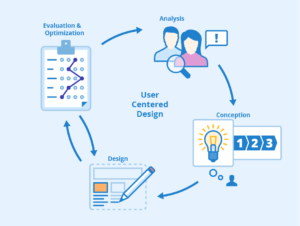Bridging the Credit Gap: Towards an Inclusive Financial Future

Bridging the Credit Gap Towards an Inclusive Financial Future
Introduction
In today’s world, credit has become an essential aspect of our financial lives. From buying a home to securing a loan for education, credit plays a significant role in shaping our financial prospects. However, the current credit system is far from perfect and often leaves millions of hardworking individuals feeling excluded and disadvantaged.
This blog aims to shed light on the flaws in the existing credit system and proposes a more inclusive approach that caters to the needs of the 99.965% – the vast majority who often find themselves underserved and overlooked.
The Predicament of the 99.965%
In the current credit landscape, a small fraction of the population controls a disproportionately large share of wealth and resources. Banks and financial institutions primarily cater to the top echelon of society, leaving the rest to navigate a complex and exclusionary credit system. For the 99.965%, obtaining credit can be a herculean task, as they often lack the credit history or collateral deemed necessary by traditional lenders.
Traditional Credit Scoring: A Barrier to Inclusion
Credit scoring models have been the cornerstone of assessing creditworthiness for decades. However, these models often rely on limited data points, such as payment history and credit utilization, which exclude millions of individuals who might be responsible borrowers but lack an extensive credit history. This exclusionary approach further deepens the divide between the haves and have-nots, perpetuating a cycle of financial inequity.
Reimagining Credit Assessment for the 99.965%
To address the pressing issue of credit exclusion, it is imperative to adopt a new approach that captures a broader range of data points while considering the individual’s overall financial health. Some potential solutions to create a more inclusive credit system are as follows:
- Alternative Data Inclusion: Embracing a more holistic approach to credit assessment, incorporating alternative data sources such as utility bills, rental payments, and even social media behavior. This approach provides a more accurate representation of an individual’s financial behavior, enabling lenders to make more informed decisions.
- Open Banking and Fintech Collaboration: Open banking initiatives can revolutionize credit assessment by granting permission to securely access an individual’s banking data. Collaborating with fintech companies allows lenders to utilize advanced algorithms, providing deeper insights into an applicant’s financial habits, spending patterns, and potential creditworthiness.
- Financial Education and Empowerment: Bridging the credit gap also requires empowering individuals with financial knowledge. By providing accessible financial literacy programs, people can make informed decisions, build credit responsibly, and increase their chances of accessing credit.
- Community-Based Lending Initiatives: Establishing community-based lending platforms that prioritize social and economic factors over conventional credit scores can foster a more inclusive system. These initiatives can empower local communities to support each other and stimulate economic growth from within.
The Socio-Economic Impact of Inclusive Credit
An inclusive credit system is not only beneficial for the individuals who gain access to credit but also has positive ramifications for society as a whole. When the 99.965% can access credit on fair terms, they can invest in education, start businesses, and make significant purchases like homes or cars. This injection of capital into the economy creates a ripple effect, leading to job creation, economic growth, and a more equitable society.
Conclusion
The current credit system has long favored the privileged few, leaving behind a vast majority of hardworking individuals who aspire to improve their lives but face insurmountable barriers to credit access. To build a fairer and more inclusive society, it is high time we revamp the credit assessment process.
By embracing alternative data, encouraging fintech collaboration, promoting financial literacy, and supporting community-based lending initiatives, we can bridge the credit gap and empower the 99.965% to realize their dreams and aspirations. An inclusive credit system not only benefits individuals but also strengthens the fabric of our society, promoting prosperity and growth for all.
For More Related Articles Browse Our Website Blogster.pk
For social Connection You can also Visit and follow our Social media Platforms
Facebook , Instagram, Linkedin, Pinterest, Quora, Twitter, Youtube.






